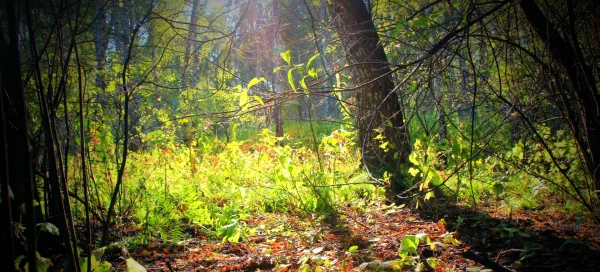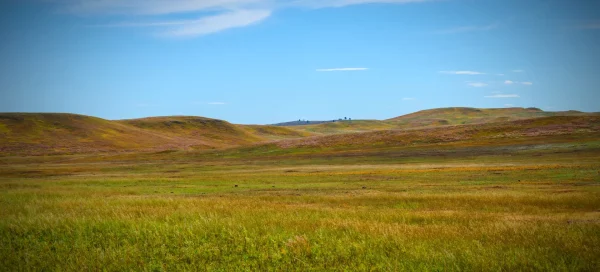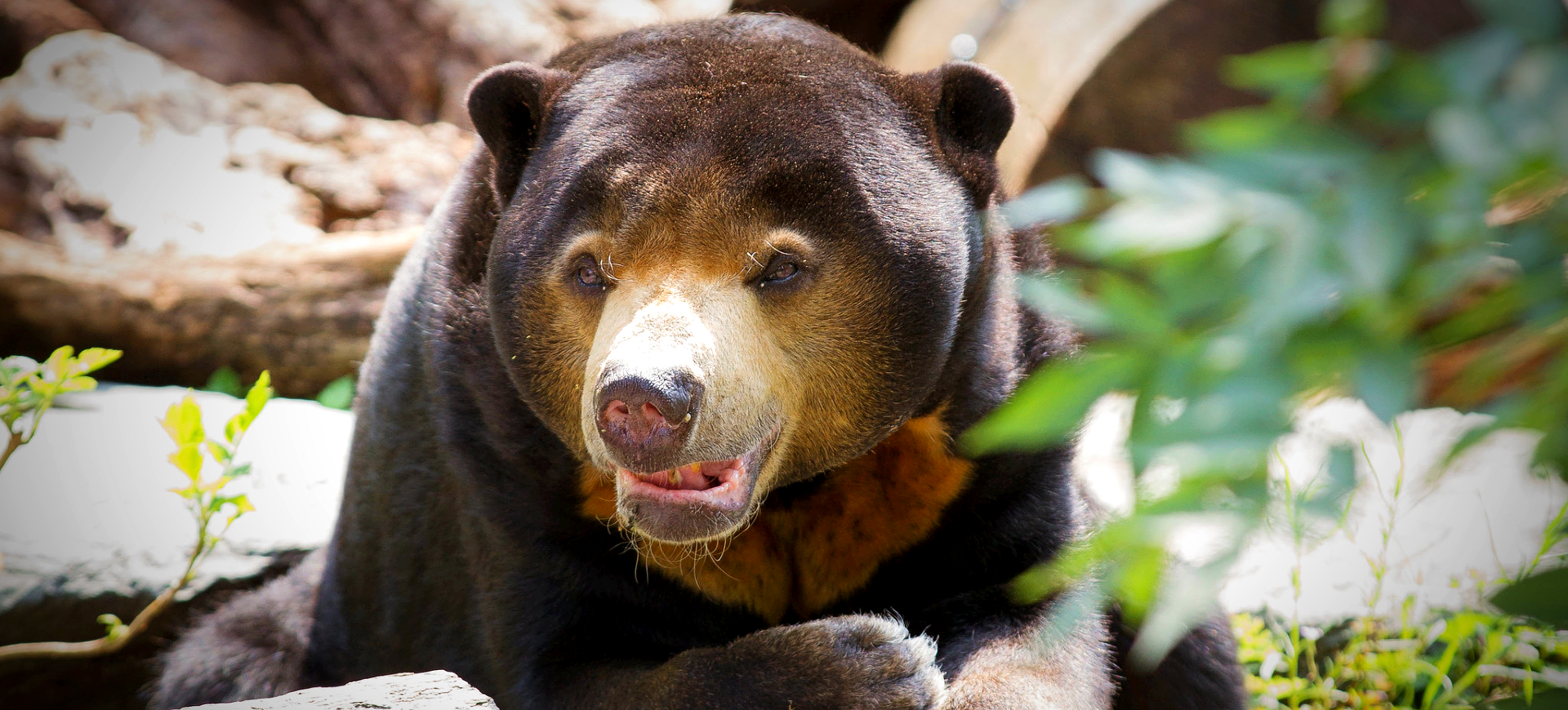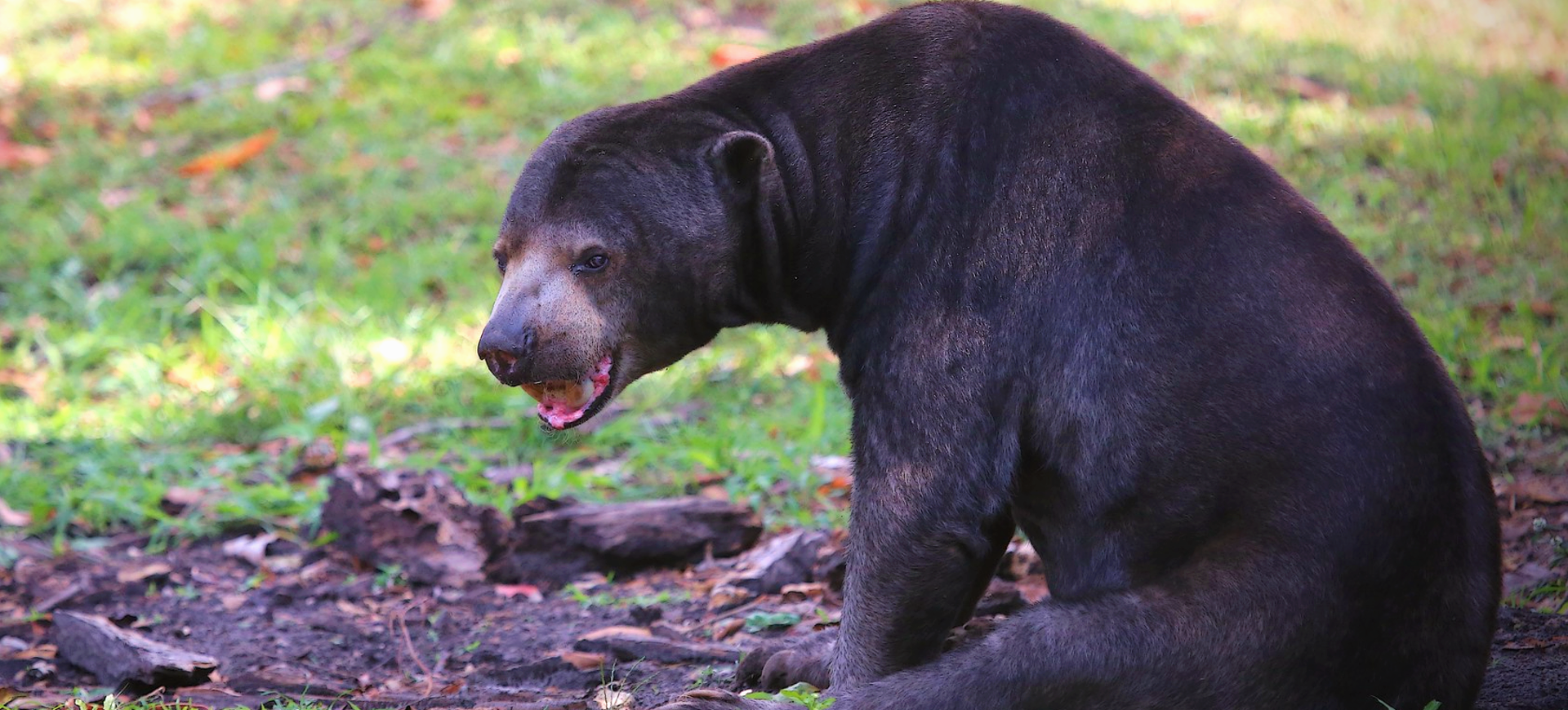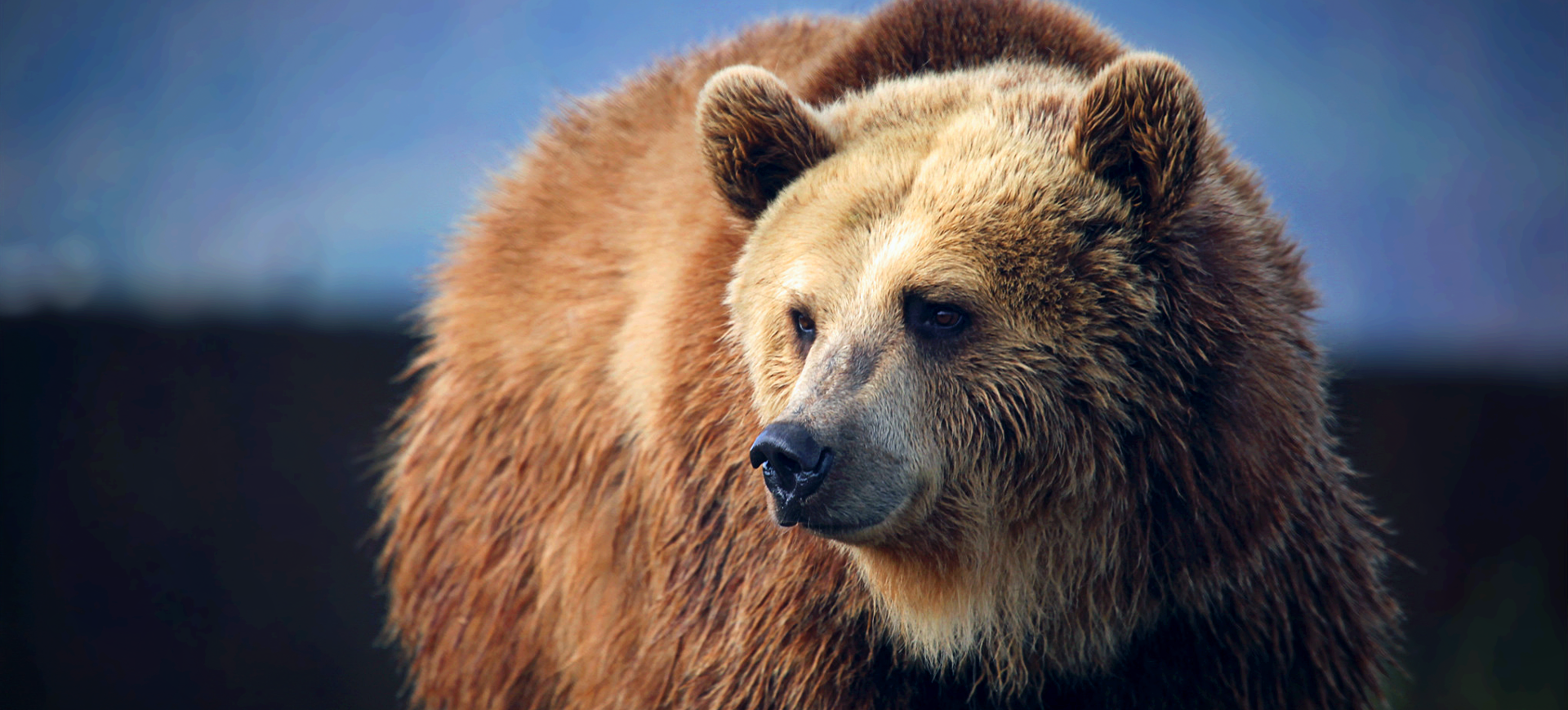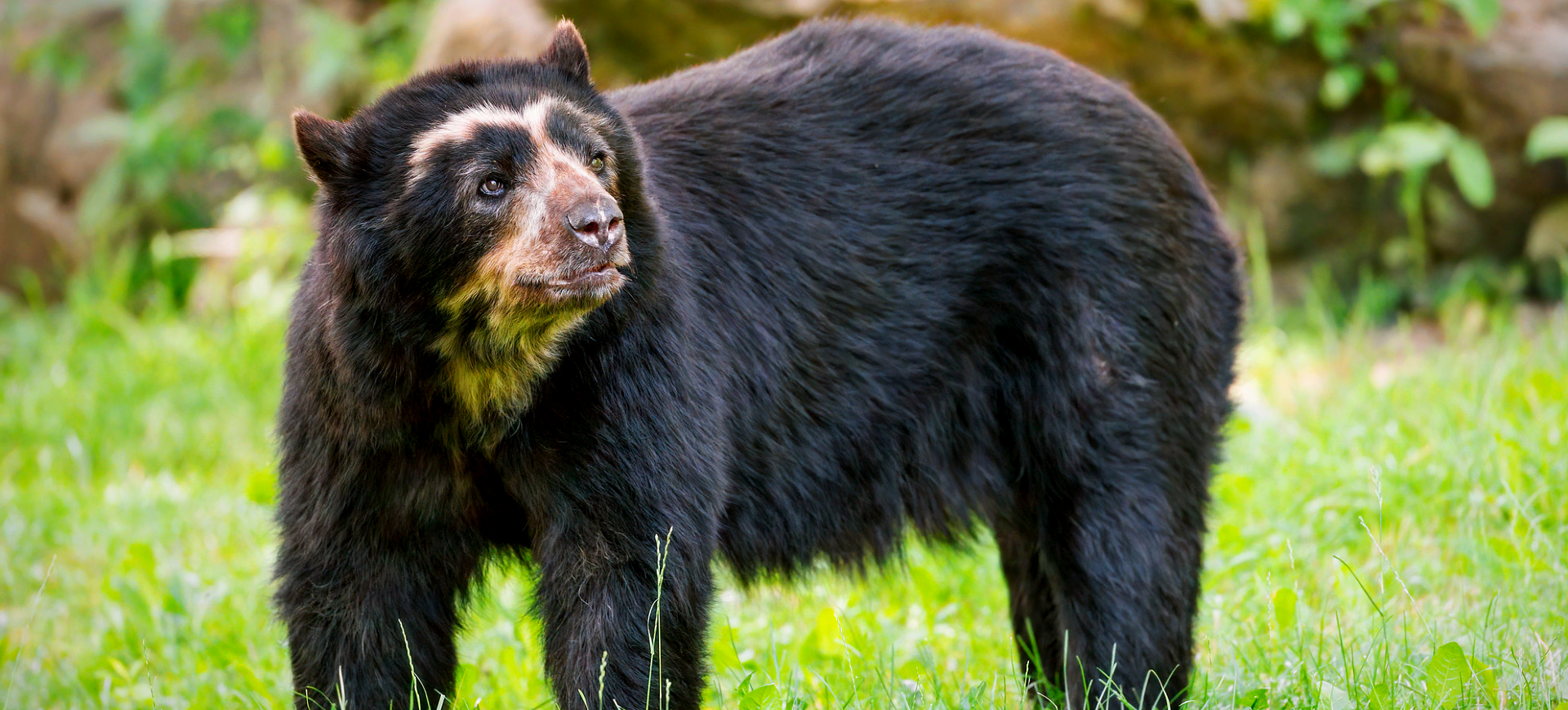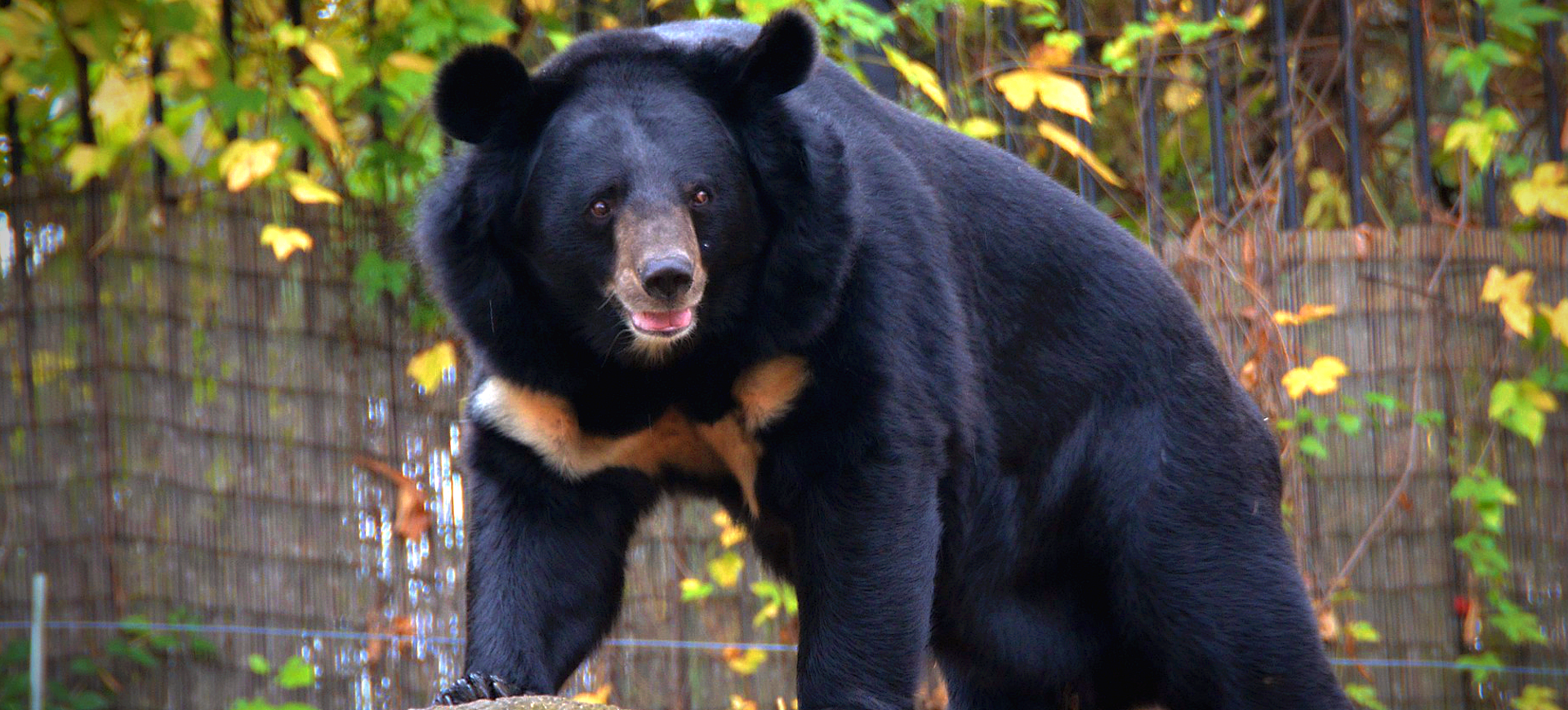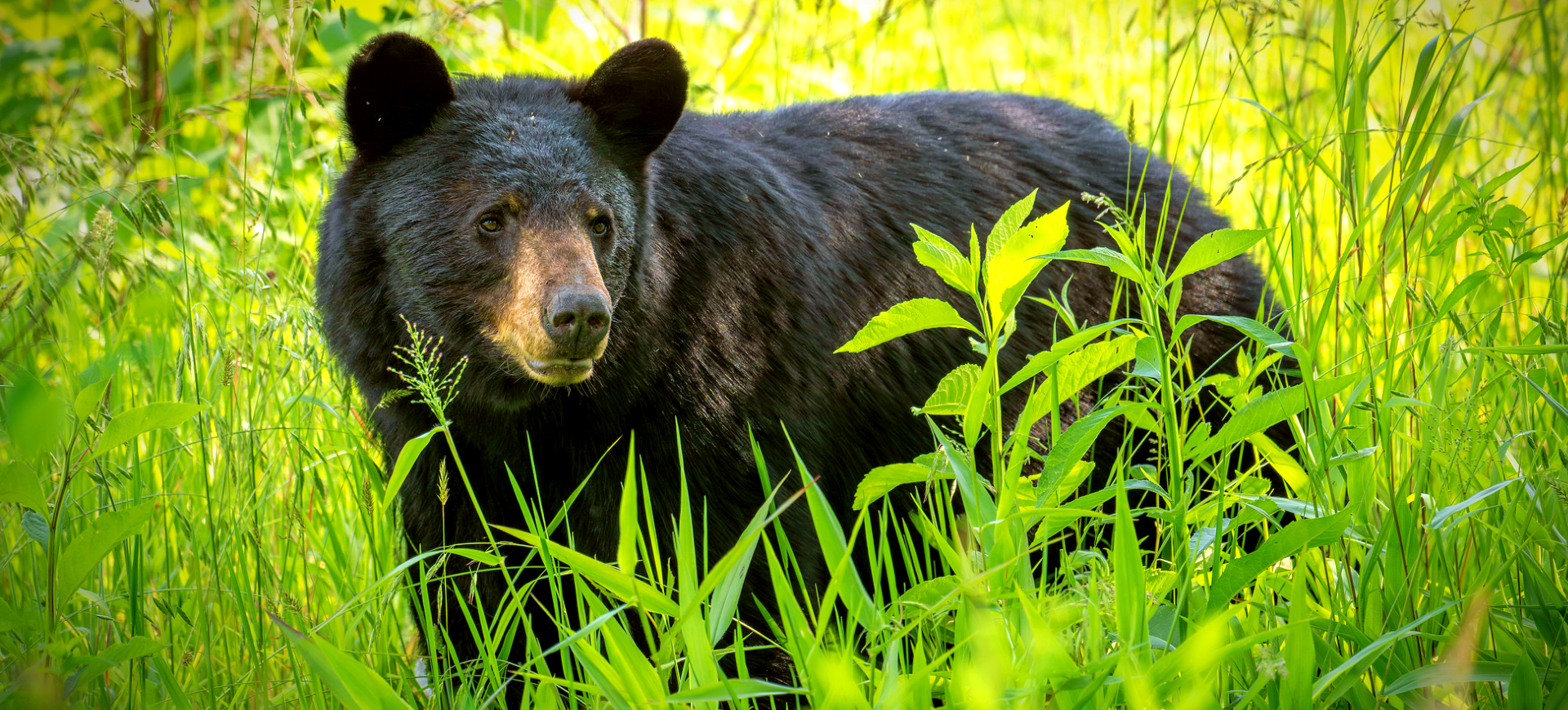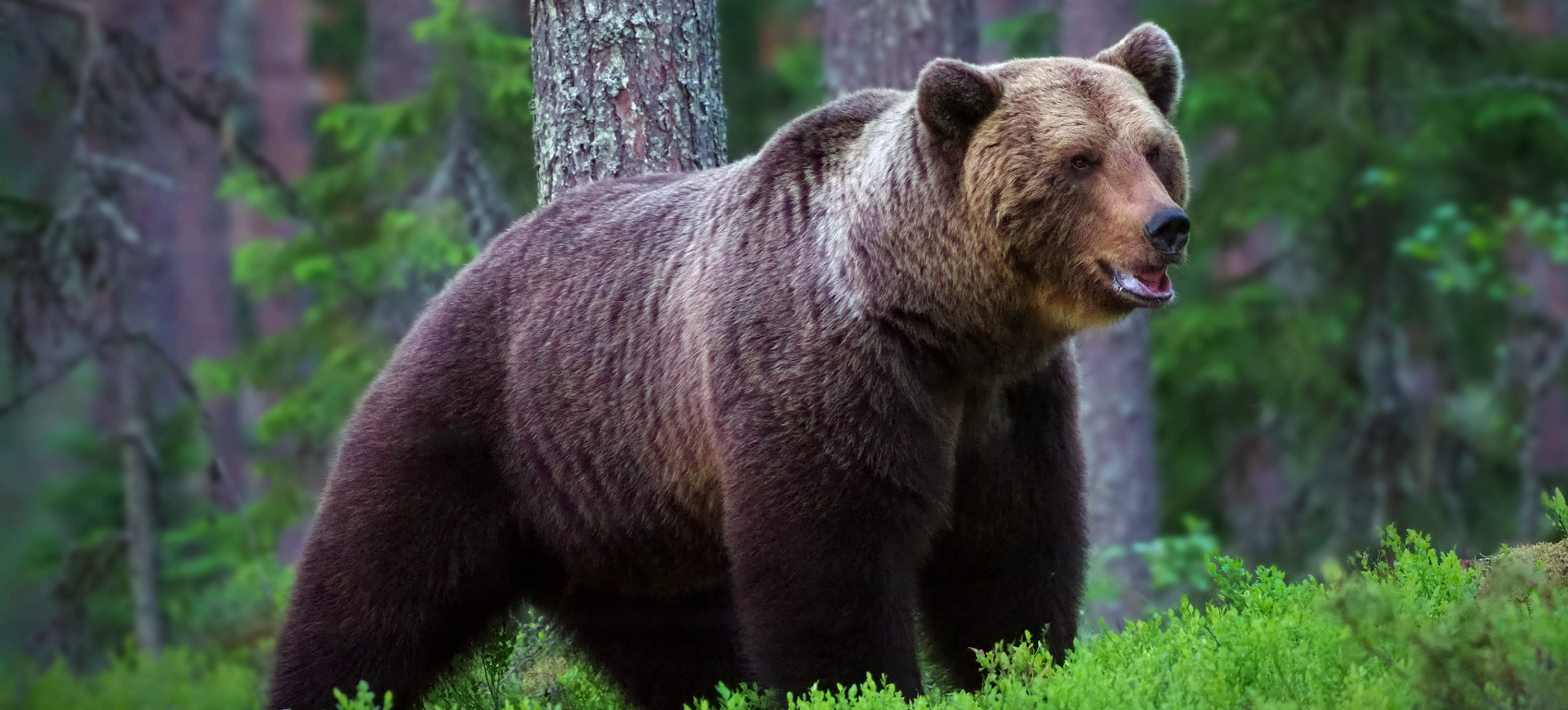Overview
The Sloth Bear, native to the Indian subcontinent, is an insectivorous bear species known for its long, shaggy coat and long claws resembling a sloth. These adaptations, along with an elongated snout and a specially evolved lower lip, enable the Sloth Bear to be an efficient forager of termites and ants, which comprise a significant portion of its diet.
These nocturnal creatures have a stocky, muscular build, with males noticeably larger than females. Their fur is long, shaggy and ranges from black to brown with a distinctive cream or white “V” or “Y” shape on their chest. Unlike other bear species, Sloth Bears have a mane around their face, giving them a distinctive shaggy appearance and helping protect them during fights.
Sloth Bears are solitary creatures, with males and females typically coming together only to mate. Their populations are primarily threatened by habitat loss and fragmentation, human-wildlife conflict, and poaching. They are listed as Vulnerable by the International Union for Conservation of Nature (IUCN) and legally protected in several countries.
Taxonomy
Kingdom
Phylum
Class
Order
Family
Genus
Species
Sub Species
Type
Physical Description:
Sloth Bears are medium-sized bears with long, shaggy black fur and a distinctive white or cream “V” or “Y”-shaped mark on their chests. Their long, curved claws and elongated snout with a gap in the upper jaw where front incisors are missing are adaptations that aid in extracting termites and ants from their nests. Their lower lip can be stretched over the outer edge of their nose, and they have relatively large nostrils that can close completely, preventing dust or insects from entering while feeding.
The fur around their neck is longer, forming a mane that provides an impressive appearance and adds an extra layer of protection during fights. They also possess a notably long tail for a bear, reaching up to 6-7 inches. Sloth Bears have a slim build and shamblingly stroll with their feet turned inward.

Lifespan: Wild: ~25 years || Captivity: ~40 years

Weight: Male: 200-300 lbs (90-140 kg) || Female: 120-210 lbs (55-95 kg)

Length: Male: 5-6 ft (1.5-1.8 m) || Female: 4.5-5.5 ft (1.4-1.7 m)

Height: Male: 2-3 ft at the shoulder (60-90 cm) || Female: 2-2.7 ft at the shoulder (60-80 cm)

Top Speed: 30 mph (48 km/h)
Characteristic:
Native Habitat:
Sloth Bears are native to the Indian subcontinent and can be found in various habitats, including dry and wet tropical forests, savannas, scrublands, and grasslands. They have a particular affinity for forested areas with rocky outcrops and slopes, typically abundant in termite mounds.
Sloth Bears are capable climbers and swimmers. They rest in caves or dens, excavating under large boulders or tree cavities. They can also use a dense brush for cover; despite their adaptability, habitat loss and fragmentation due to deforestation and human encroachment present significant threats to this species.
Biomes:
Biogeographical Realms:
Continents:
Diet:
Diet & Feeding Habits:
Sloth Bears have a specialized diet predominantly comprising termites and ants, which account for up to 95% of their diet. They use their long, sickle-shaped claws to dig into termite mounds and then suck up the insects through the gap in their front teeth, similar to a vacuum. Their ability to close their nostrils, combined with their long lower lip, aids in this process and prevents insect bites.
Although primarily insectivorous, Sloth Bears consume fruits, flowers, honey, and occasionally carrion. They are particularly fond of mangoes, sugar cane, and jackfruit. They are known to climb trees to get honey and are sometimes called “Honey Bears” due to their fondness for it. Despite having a predominantly insect-based diet, Sloth Bears have the dental structure of a generalist omnivore, allowing them to adapt their diet if necessary.
Mating Behavior:
Mating Description:
Sloth Bears do not have a specific breeding season and can mate throughout the year, though there is a peak from June to July and from November to December. Males and females generally lead solitary lives and come together only to mate. Males may follow a female for days before she is receptive. During courtship, the males and females engage in playful behavior and mock fights.
After mating, the female gives birth to 1-2 cubs after a 6-7 months gestation period. Unlike other bear species, Sloth Bears give birth in dens. Cubs are born blind and helpless, and the mother will remain in the den with her cubs for several weeks. The cubs will nurse for several months and then begin to forage with the mother. Cubs stay with their mother for about two years before setting out independently.
Reproduction Season:
Birth Type:
Pregnancy Duration:
Female Name:
Male Name:
Baby Name:
Social Structure Description:
Sloth bears, found primarily in the tropical forests of South Asia, exhibit an intriguing blend of solitary behavior and social interaction. These creatures typically lead an independent existence, with males and females interacting mainly for mating purposes. They do not exhibit territorial behavior, as evidenced by their overlapping home ranges. Despite these overlaps, sloth bears respect each other’s space and avoid unnecessary encounters, suggesting a non-confrontational coexistence within their habitats.
Communication among sloth bears is a fascinating aspect of their behavior. They interact with various vocalizations, scent markings, and visual signals. Their complex vocal repertoire includes a variety of sounds, such as huffs, barks, screams, and growls. These varied vocalizations play vital roles in vital motions and intentions, ranging from warning signals to mating calls. This intricate communication system and their solitary yet occasionally interactive behavior add a captivating layer to the overall understanding of the sloth bear’s social dynamics.
Groups:
Conservation Status:
Population Trend:
Sloth Bears have been classified as Vulnerable by the IUCN due to their decreasing population trends. The major threats are habitat loss and degradation, poaching for body parts, and human-wildlife conflict. As human settlements expand into their habitats, Sloth Bears increasingly conflict with people. The number of Sloth Bears remaining in the wild is unknown, but it’s estimated to be around 20,000.
Poaching for body parts, particularly the gallbladder used in traditional medicine, and for their claws and canines used as amulets pose significant threats. In addition, Sloth Bears are often captured for use in “dancing bear” performances, a practice that is now illegal but still occurs in some areas.
Population Threats:
Habitat loss, fragmentation, and degradation due to agricultural expansion and deforestation are the most significant threats to Sloth Bears. As their natural habitats are destroyed, they are forced to live closer to human settlements, increasing human-wildlife conflict. Incidents of bears attacking humans and being killed in retaliation are becoming more common.
Sloth Bears are also targeted by poachers for their body parts, especially gallbladders used in traditional Asian medicine. Despite the illegal status, Sloth Bears are still captured and trained as “dancing bears,” a cruel practice that causes significant harm and stress to the bears.
Conservation Efforts:
Conservation strategies for Sloth Bears include habitat preservation and restoration, stricter law enforcement to combat poaching and the illegal wildlife trade, and mitigating human-bear conflicts. Protected areas have been established within their range, and laws have been enacted to protect them from hunting and capture.
Conservation organizations, such as the Wildlife SOS in India, work towards rescuing “dancing bears” and rehabilitating them. Community education and awareness programs are essential to reduce human-wildlife conflict and promote coexistence. Ex-situ conservation efforts, like captive breeding programs in zoos, can support maintaining genetic diversity among the population.
Additional Resources:
Fun Facts
- Sloth Bears are the only bear species that carry their young on their back.
- Despite their name, Sloth Bears are not related to sloths.
- Their long, curved claws are perfect for digging up termite mounds.
- They have a gap in their teeth to suck up termites and ants like a vacuum.
- Sloth Bears do not hibernate due to the warm climate in their range.
- They are known to have a keen sense of smell, better than that of a tiger.
- Their white chest mark is unique to each individual, like a human’s fingerprint.
- They have a specially adapted lower lip they can stretch over their nose to prevent insect bites while feeding.
- Sloth Bears are good swimmers and often bathe in streams and pools.
- Despite their clumsy appearance, they can run faster than a human.




